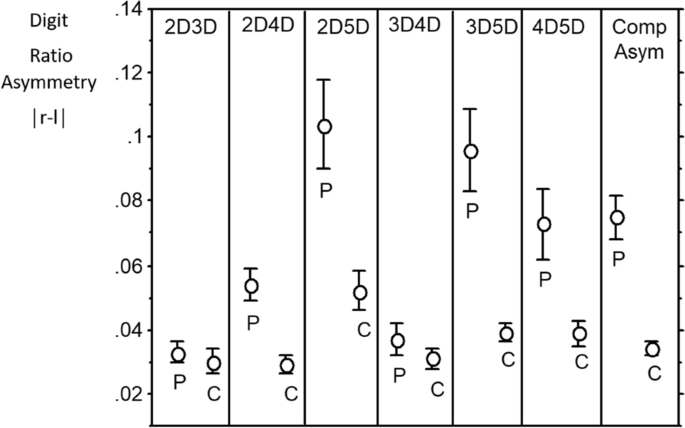2022-03-25 スワンシー大学
・スワンシー大学の関わる研究では、子宮内および思春期の性ホルモン(テストステロン)のレベルとCovid入院の関連性が検討されている。ウイルスに感染しても、ほとんどの人は軽い症状で済むが、病院での治療が必要な患者は、年齢や性別によって割合が異なる。
・小指が他の指に比べて短い「女性化」した患者では、入院に至るような重度のCovid-19症状を経験する傾向があり、さらに、右手と左手の比率が2D:4Dおよび3D:5Dで大きい患者は、入院する確率が大幅に高くなることが観察された。
・これらの予備的知見は、オンライン学術誌『Scientific Reports』に掲載された。
<関連情報>
- https://www.swansea.ac.uk/press-office/news-events/news/2022/03/how-fingers-could-point-to-a-link-between-low-testosterone-and-covid-hospitalizations.php
- https://www.nature.com/articles/s41598-022-08646-7
COVID-19の発達不安定と入院の危険因子としての数字比とその非対称性 Digit ratios and their asymmetries as risk factors of developmental instability and hospitalization for COVID-19
A. Kasielska-Trojan,J. T. Manning,M. Jabłkowski,J. Białkowska-Warzecha,A. L. Hirschberg &B. Antoszewski
Published: 17 March 2022

Abstract
COVID-19 presents with mild symptoms in the majority of patients but in a minority it progresses to acute illness and hospitalization. Here we consider whether markers for prenatal sex hormones and postnatal stressors on developmental instability, i.e. digit ratios and their directional and unsigned asymmetries, are predictive of hospitalization. We focus on six ratios: 2D:3D; 2D:4D; 2D:5D; 3D:4D; 3D:5D; 4D:5D and compare hospitalized patient and control means for right, and left ratios, directional asymmetries (right–left) and unsigned asymmetries [|(right–left)|]. There were 54 patients and 100 controls. We found (i) patients differed in their digit ratios from controls (patients > controls) in all three ratios that included 5D (2D:5D, 3D:5D and 4D:5D) with small to medium effect sizes (d = 0.3 to 0.64), (ii) they did not differ in their directional asymmetries, and (iii) patients had greater |(right–left)| asymmetry than controls for 2D:4D (d = .74) , and all ratios that included 5D; 2D:5D (d = 0.66), 3D:5D (d = .79), 4D:5D (d = 0.47). The Composite Asymmetry of the two largest effects (2D:4D + 3D:5D) gave a patient and control difference with effect size d = 1.04. All patient versus control differences were independent of sex. We conclude that digit ratio patterns differ between patients and controls and this was most evident in ratios that included 5D. Large |(right–left)| asymmetries in the patients are likely to be a marker for postnatal stressors resulting in developmental perturbations and for potential severity of COVID-19.


